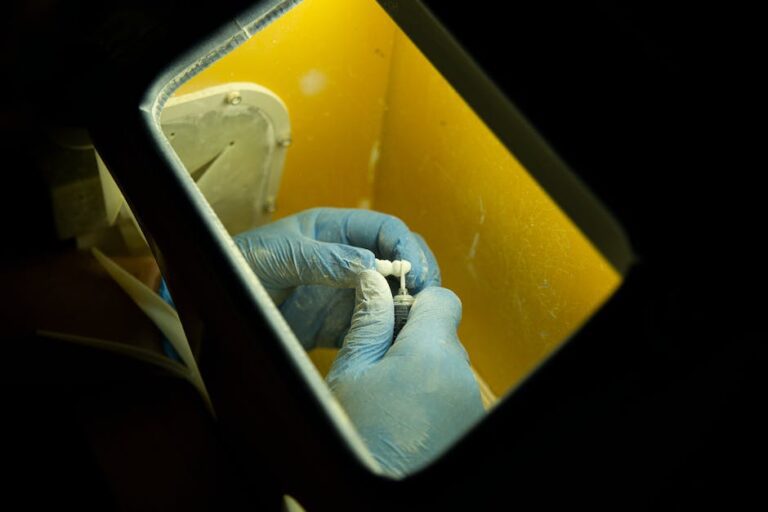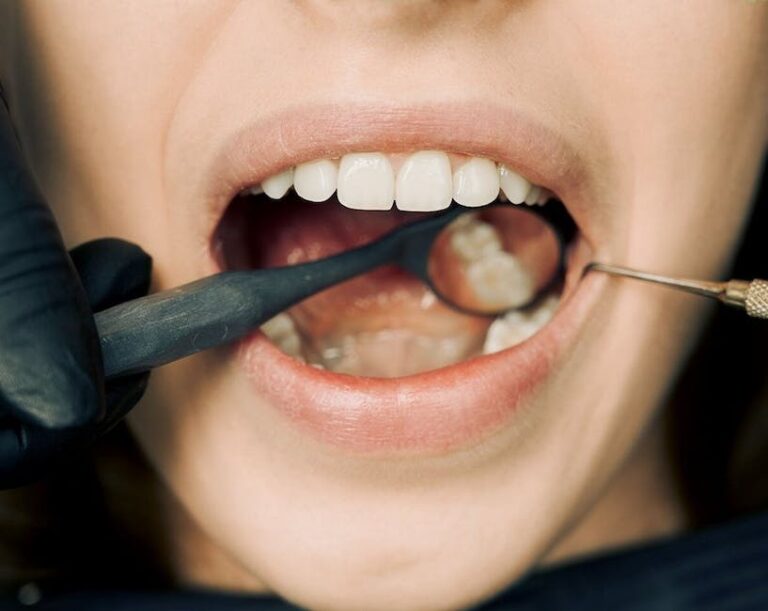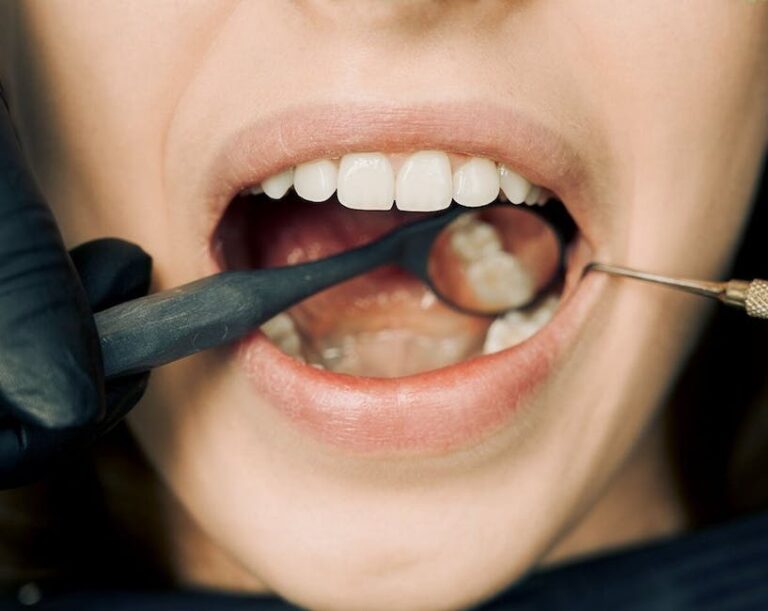“Exploring Cutting-Edge Technologies for Dental Health”
Welcome to our blog, where we delve into the exciting world of cutting-edge technologies for dental health. From advanced imaging techniques to innovative treatment options, the field of dentistry is constantly evolving. In this article, we will explore the latest technologies that are transforming the way we approach oral care. Let’s find out in detail in the article below.
Introducing The Latest Technologies for Dental Health
1. Advanced Imaging Techniques
In the world of dental health, advanced imaging techniques have revolutionized the way dentists diagnose and treat oral conditions. Traditional X-rays are now being replaced by digital radiography, which offers a more accurate and detailed view of the teeth and gums. This technology allows dentists to detect problems such as tooth decay, bone loss, and even oral cancers at earlier stages.
Another cutting-edge imaging technique is cone beam computed tomography (CBCT), which provides three-dimensional images of the oral and maxillofacial region. CBCT scans are particularly helpful in planning dental implants, orthodontic treatments, and evaluating complex dental cases. With its ability to capture detailed images with low radiation exposure, CBCT is becoming a standard tool in many dental practices.
Furthermore, intraoral cameras are now commonly used in dental offices. These small handheld devices allow dentists to capture high-resolution images of a patient’s teeth and gums, making it easier to identify and explain dental issues. Patients also benefit from better visual understanding of their oral health, which can lead to increased compliance with treatment plans.
2. Innovative Treatment Options
Advancements in dental technology have also led to innovative treatment options that improve patient outcomes and experiences. One such option is laser dentistry, which uses focused light beams to perform various dental procedures. Laser technology can be used for cavity detection, gum recontouring, and even teeth whitening. The benefits of laser dentistry include minimal discomfort, faster healing, and reduced risk of complications.
For patients with missing teeth, dental implants have become the treatment of choice. These titanium posts are surgically placed in the jawbone to serve as artificial tooth roots. With the help of computer-guided implant placement and 3D printing technology, dentists can achieve precise and predictable results. Dental implants not only restore aesthetics and function but also promote bone health, unlike traditional dentures or bridges.
Another emerging area is regenerative dentistry, where stem cells are being used to repair and regenerate damaged tissues in the oral cavity. Stem cell therapy has the potential to revolutionize dental treatments by promoting natural healing and regeneration, reducing the need for invasive procedures.
3. Enhancing Patient Care and Comfort
Besides diagnosis and treatment, cutting-edge technologies are also improving the overall patient experience and comfort during dental visits. One example is digital dentistry, which involves the use of computer-aided design (CAD) and computer-aided manufacturing (CAM) techniques. This enables dentists to create precise digital impressions of a patient’s teeth, eliminating the need for messy traditional impressions. The impressions can then be used to create customized restorations such as crowns, bridges, and veneers.
Virtual reality (VR) technology is also being integrated into dental practices to reduce anxiety and pain during procedures. VR headsets provide patients with immersive experiences, distracting them from the dental environment and helping them relax. This can be particularly beneficial for patients with dental phobia or those undergoing lengthy procedures.
Lastly, advancements in dental materials have led to the development of stronger, more durable, and aesthetically pleasing restorative options. Tooth-colored fillings, ceramic crowns, and porcelain veneers are just a few examples of modern dental materials that mimic the natural appearance of teeth while providing long-lasting results. These advancements not only enhance the aesthetics of dental restorations but also ensure their longevity and functionality.
4. Improving Oral Health Education and Monitoring
Technology is also playing a significant role in improving oral health education and monitoring. Dental apps and online platforms provide easy access to educational resources, interactive tools, and personalized oral hygiene recommendations. These digital platforms help patients understand the importance of oral health and empower them to take better care of their teeth and gums.
Furthermore, wearable devices such as smart toothbrushes and oral health trackers are becoming increasingly popular. These devices monitor brushing techniques, track oral hygiene habits, and provide real-time feedback to users. By integrating technology into oral health routines, individuals can receive personalized guidance and achieve optimal oral hygiene.
Another exciting development is the use of artificial intelligence (AI) in dentistry. AI algorithms can analyze large datasets and assist dentists in diagnosing conditions, predicting treatment outcomes, and designing personalized treatment plans. This technology has the potential to revolutionize the field of dentistry by improving diagnostic accuracy and optimizing treatment strategies.
All in all, the field of dentistry is continuously evolving with the introduction of cutting-edge technologies. From advanced imaging techniques and innovative treatment options to improved patient care and oral health education, these technologies are revolutionizing the way we approach dental health. With further advancements on the horizon, the future of dentistry looks promising, offering improved diagnostics, more efficient treatments, and better patient outcomes.
Introducing The Latest Technologies for Dental Health
1. Advanced Imaging Techniques
In the world of dental health, advanced imaging techniques have revolutionized the way dentists diagnose and treat oral conditions. Traditional X-rays are now being replaced by digital radiography, which offers a more accurate and detailed view of the teeth and gums. This technology allows dentists to detect problems such as tooth decay, bone loss, and even oral cancers at earlier stages.
Another cutting-edge imaging technique is cone beam computed tomography (CBCT), which provides three-dimensional images of the oral and maxillofacial region. CBCT scans are particularly helpful in planning dental implants, orthodontic treatments, and evaluating complex dental cases. With its ability to capture detailed images with low radiation exposure, CBCT is becoming a standard tool in many dental practices.
Furthermore, intraoral cameras are now commonly used in dental offices. These small handheld devices allow dentists to capture high-resolution images of a patient’s teeth and gums, making it easier to identify and explain dental issues. Patients also benefit from better visual understanding of their oral health, which can lead to increased compliance with treatment plans.
2. Innovative Treatment Options
Advancements in dental technology have also led to innovative treatment options that improve patient outcomes and experiences. One such option is laser dentistry, which uses focused light beams to perform various dental procedures. Laser technology can be used for cavity detection, gum recontouring, and even teeth whitening. The benefits of laser dentistry include minimal discomfort, faster healing, and reduced risk of complications.
For patients with missing teeth, dental implants have become the treatment of choice. These titanium posts are surgically placed in the jawbone to serve as artificial tooth roots. With the help of computer-guided implant placement and 3D printing technology, dentists can achieve precise and predictable results. Dental implants not only restore aesthetics and function but also promote bone health, unlike traditional dentures or bridges.
Another emerging area is regenerative dentistry, where stem cells are being used to repair and regenerate damaged tissues in the oral cavity. Stem cell therapy has the potential to revolutionize dental treatments by promoting natural healing and regeneration, reducing the need for invasive procedures.
3. Enhancing Patient Care and Comfort
Besides diagnosis and treatment, cutting-edge technologies are also improving the overall patient experience and comfort during dental visits. One example is digital dentistry, which involves the use of computer-aided design (CAD) and computer-aided manufacturing (CAM) techniques. This enables dentists to create precise digital impressions of a patient’s teeth, eliminating the need for messy traditional impressions. The impressions can then be used to create customized restorations such as crowns, bridges, and veneers.
Virtual reality (VR) technology is also being integrated into dental practices to reduce anxiety and pain during procedures. VR headsets provide patients with immersive experiences, distracting them from the dental environment and helping them relax. This can be particularly beneficial for patients with dental phobia or those undergoing lengthy procedures.
Lastly, advancements in dental materials have led to the development of stronger, more durable, and aesthetically pleasing restorative options. Tooth-colored fillings, ceramic crowns, and porcelain veneers are just a few examples of modern dental materials that mimic the natural appearance of teeth while providing long-lasting results. These advancements not only enhance the aesthetics of dental restorations but also ensure their longevity and functionality.
4. Improving Oral Health Education and Monitoring
Technology is also playing a significant role in improving oral health education and monitoring. Dental apps and online platforms provide easy access to educational resources, interactive tools, and personalized oral






